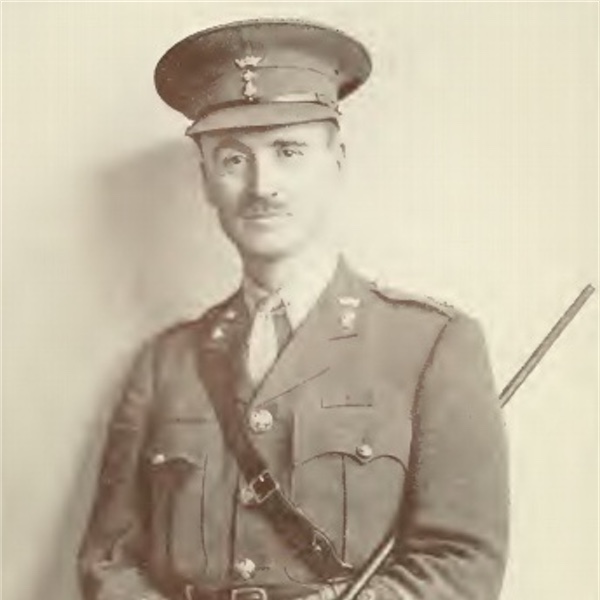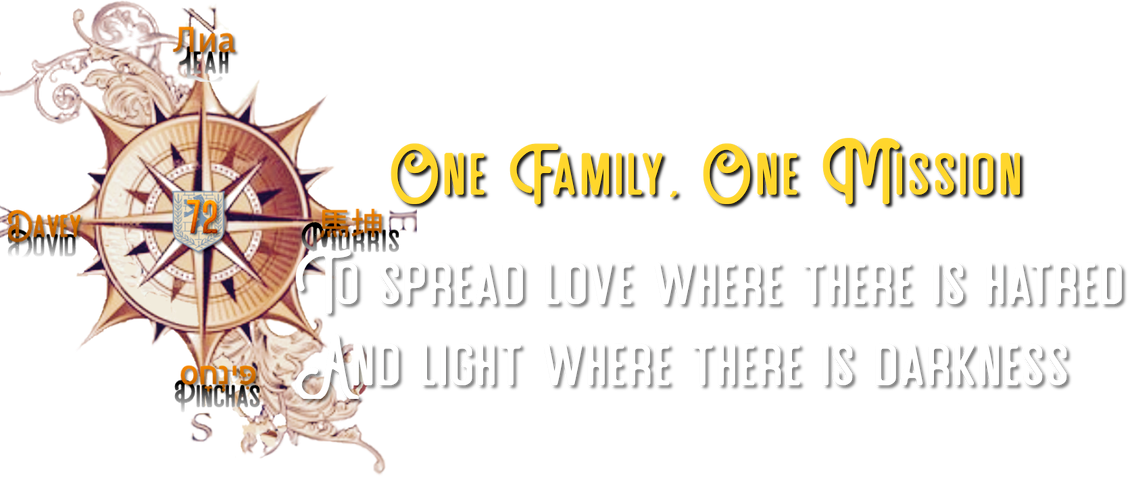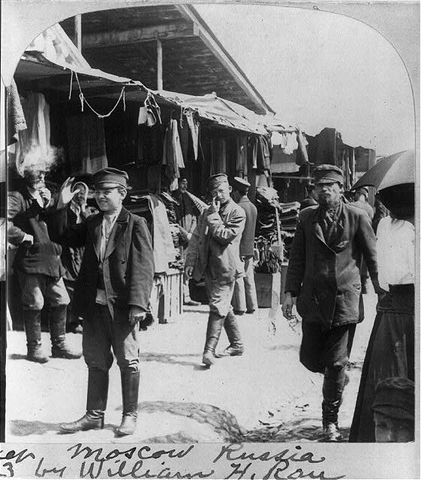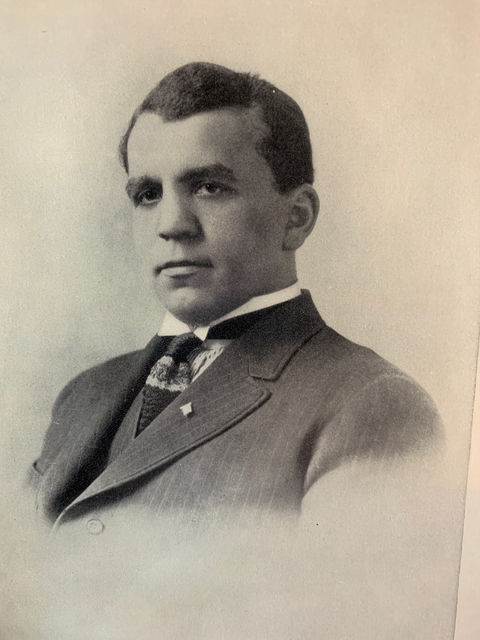
Lieutenant-ColonelJohn Henry Patterson, DSO (10 November 1867 – 18 June 1947), known as J. H. Patterson, was a British soldier, hunter, author and Christian Zionist, best known for his book The Man-Eaters of Tsavo (1907), which details his experiences while building a railway bridge over the Tsavo river in British East Africa(now Kenya) in 1898–99.
In the First World War, Patterson was the commander of the Jewish Legion, "the first Jewish fighting force in nearly two millennia", and has been described as the godfather of the modern Israel Defense Forces.[1]
Youth and Army service
Patterson was born in 1867 in Forgney, Ballymahon, County Longford, Ireland, to a Protestant father and Roman Catholic mother.
He joined the British Army at the age of seventeen and eventually attained the rank of Lieutenant-Colonel[2] and was awarded the Distinguished Service Order (DSO). He finally retired from the military in 1920.
War service
Patterson joined the Essex Imperial Yeomanry for the Second Boer War (1899–1902), and served with the 20th Battalion, Imperial Yeomanry, for which he was awarded the Distinguished Service Order in November 1900.[7] He returned home, but was again called for service when on 17 January 1902 he was appointed to command the 33rd Battalion, Imperial Yeomanry, with the temporary rank of lieutenant-colonel.[8][9] The battalion left Southampton on SS Assaye in May 1902,[10] arriving in South Africa after the war had ended with the Peace of Vereeniging.
Colonel Patterson commanded the West Belfast regiment of the Ulster Volunteers during the Home Rule Crisis of 1913–14.[11]
He served in the First World War. Although he was himself a Protestant, he became a major figure in Zionism as the commander of both the Zion Mule Corps and later the 38th Battalion of the Royal Fusiliers (also known as the Jewish Legion)[12] which would eventually serve as the foundation of the Israeli Defence Force decades later. The Zion Mule Corps, which served with distinction in the Gallipoli Campaign has been described as "the first Jewish fighting force in nearly two millennia".[1]
During his time in command of the Jewish Legion (which served with distinction in the Palestine Campaign), Patterson was forced to deal with extensive, ongoing anti-semitism toward his men from many of his superiors (as well as peers and subordinates), and more than once threatened to resign his commission to bring the inappropriate treatment of his men under scrutiny. He retired from the British Army in 1920 as a lieutenant-colonel (the same rank he held when the war started) after thirty-five years of service. It is generally accepted that much of the admiration and respect of his men (and modern-day supporters) is due to the fact that he essentially sacrificed any opportunity for promotion (and his military career in general) in his efforts to ensure his men were treated fairly. His last two books, With the Zionists at Gallipoli (1916) and With the Judaeans in the Palestine Campaign (1922) are based on his experiences during these times.
Advocacy of Zionism
After his military career, Patterson continued his support of Zionism. He remained a strong advocate of justice for the Jewish people as an active member of the Bergson Group and a promoter of a Jewish army to fight the Nazis and to stop the Holocaust. He was a member of the Emergency Committee to Save the Jewish People of Europe. During the Second World War, while he was in America, the British government cut off his pension, arguing they had no way to securely transmit his funds to him. This left Patterson in severe financial difficulty. Just the same, he energetically continued working toward the establishment of a separate Jewish state in the Middle East, which became a reality with the statehood of Israel on 14 May 1948, less than a year after his death.
Patterson was close friends with many Zionist supporters and leaders, among them Ze'ev Jabotinsky and Benzion Netanyahu. According to Benzion's younger son Benjamin Netanyahu, who later became Prime Minister of Israel, Benzion named his first son, Yonatan Netanyahu, after Patterson.[13][14] Patterson attended Yonatan Netanyahu's circumcision and gave him a silver cup engraved with the words "To my beloved godson Yonatan from Lt.-Col. John Henry Patterson".[15]
Family
He married Frances Helena Gray in 1895. She, in 1890, had been one of the first women to take a law degree in the UK.[16] Their son Bryan Patterson(1909–79) became a palaeontologist at the Field Museum in Chicago.[17]
References
- Prime Minister Benjamin Netanyahu's Remarks at the Burial Ceremony for Lt. Col. John Henry Patterson's Ashes; 4 December 2014
- "No. 29160". The London Gazette (Supplement). 11 May 1915. p. 4622.
- Patterson, J.H.(1907) The Man-Eaters of Tsavo. Macmillan. In the introduction to the Peter Hathaway Capstick Libray edition (1986: St. Martin's Press), Capstick writes, "As for the Tsavo Bridge? Alas, the German forces blew it to atoms during the East African Campaign, wasting all the terror, death, and horror that surrounded its creation in the first place."
- Baboo PURSHOTAM HURJEE PURMAR, Overseer and Clerk of Works, on behalf of your Workmen. Dated at Tsavo, January 30, 1899.
- Man Eaters at the Field Museum
- THE CASE OF LIEUTENANT-COLONEL PATTERSON. HL Deb 01 April 1909 vol 1 cc593-8
- "No. 27359". The London Gazette. 27 September 1901. p. 6307.
- "No. 27415". The London Gazette. 11 March 1902. p. 1732.
- "No. 27432". The London Gazette. 9 May 1902. p. 3091.
- "The War – the reinforcements". The Times (36768). London. 15 May 1902. p. 9.
- A. T. Q. Stewart, The Ulster Crisis (1967), p. 122; Timothy Bowman, Carson's Army: The Ulster Volunteer Force, 1910–22 (2007), p. 60. Denis Brian's biography does not mention any involvement with the UVF, but is rather vague on this period of Patterson's life.
- EMAIL, Jewish Magazine. "the Jewish Legion and the Israeli Army". Jewishmag.com. Retrieved 3 October 2011.
- "The Seven Lives of Colonel Patterson: how an Irish lion hunter led the Jewish Legion to victory" by Denis Brian (pub. 2008), pg. xiii
- "The lion-killer who became an Israeli hero". BBC News. 29 November 2014. Retrieved 30 November 2014.
- "Ashes Of Non-Jewish Commander Of WWI Jewish Legion Brought To Israel For Burial, Fulfilling His Wish" Jewish Press, Published: 14 October 2014
- Portia Ante Portas: Women and the Legal Profession in Europe, ca. 1870–1925,Author: James C. Albisetti, Source: Journal of Social History, Vol. 33, No. 4 (Summer, 2000), pp. 825–857
- Olsen, Everett C. (1985). "Bryan Patterson 1909–1979 A Biographical Memoir" (PDF). National Academy of Sciences. Retrieved 21 May 2014.
- Jerry Klinger. The Struggle for the Jewish Legion and The Birth of the IDF. The Jewish Magazine (October 2010)
- אורי שפירא (2014-12-08), I24NEWS John Henry Patterson Uri Shapira, retrieved 2016-09-23
- "The Lion Hunter Returns to Zion". Retrieved 2016-09-23.
- KaFaDoKyA NEWS (2014-12-04), Israel reburies ashes of British WW1 commander, retrieved 2016-09-23
- "Non-Jewish L.A. Zionist John Henry Patterson buried in Israel | Israel". Retrieved 2016-09-23.
- Natan Slifkin (2014-12-04), PM Netanyahu's speech at the reinterment of Col. Patterson, retrieved 2016-09-23
- Israel Philatelic Service Bulletin, No. 68, January 2015, page 4
Bibliography
- "John Henry Patterson photo". fieldmuseum.com.
- Streeter, Patrick (2004). Mad for Zion: A Biography of Colonel J.H. Patterson. Matching Press. ISBN 978-0-951-86643-6.
- "John Heny Patterson Biography – Zionism and Israel – Biographies". Zionism-israel.com. Retrieved 3 October 2011.
- Denis Brian, The Seven Lives of Colonel Patterson: how an Irish lion hunter led the Jewish Legion to victory (2008) Syracuse University Press
- The Jewish American Society for Historic Preservation http://www.JASHP.org
External links
 Works related to Author:John Henry Patterson at Wikisource
Works related to Author:John Henry Patterson at Wikisource Media related to John Henry Patterson at Wikimedia Commons
Media related to John Henry Patterson at Wikimedia Commons- Works by John Henry Patterson at Project Gutenberg
- Works by or about John Henry Patterson at Internet Archive
- Works by John Henry Patterson at LibriVox (public domain audiobooks)

















